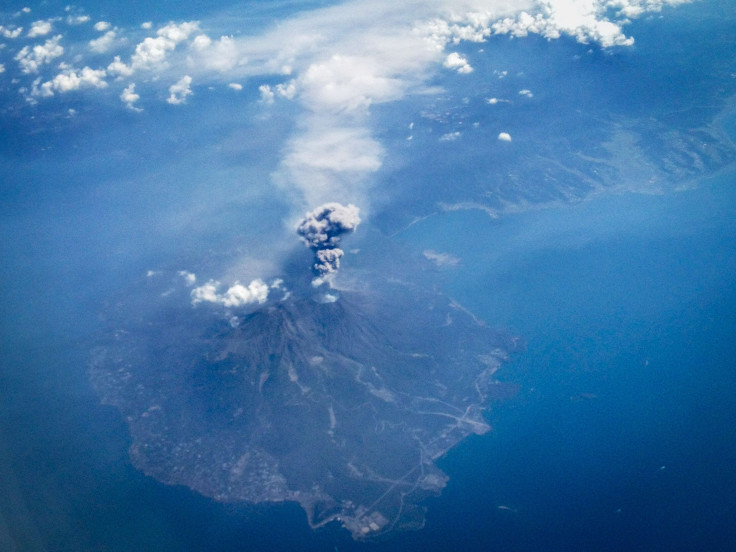Japan Raises Sakurajima Volcano Eruption Alert, Residents Told To Prepare For Possible Evacuation

Residents of the southern Japanese city of Kagoshima have been asked to prepare for a possible evacuation after a recent uptick in seismic activity around the Sakurajima volcano, located off the coast of the city. An eruption might also pose significant risk to operations at Sendai nuclear power plant, which was restarted earlier this week after a hiatus of four and a half years.
“The possibility for a large-scale eruption has become extremely high for Sakurajima,” the Japan Meteorological Agency reportedly said early Saturday, raising its alert to the second-highest level.
Japan lies along the western edge of the so-called “ring of fire” -- a 25,000-mile region dotted with 75 percent of the world’s active volcanoes. As a result, in addition to being an earthquake-prone region, the country also witnesses several sporadic volcanic eruptions.
Last September, nearly 60 people died when Mount Ontake, located on the Honshu island, erupted.
The last major eruption at Sakurajima took place in 2013, when it released plumes of ash that reached as far as Kagoshima -- a city of more than 600,000 people -- and sent rocks flying into populated areas, causing significant damage but no major injuries. The eruption marked the volcano’s 500th such event of the year.
If the volcano -- located approximately 30 miles from the Sendai nuclear plant -- erupts again, it can effect operations at the plant, according to media reports. The plant recommenced operations Tuesday despite strong opposition from local residents.
All of Japan’s nuclear reactors were shut down in 2011 after the Fukushima meltdown, which was triggered by an earthquake and a tsunami.
“There are schools and hospitals near the plant, but no one has told us how children and the elderly would be evacuated,” Yoshitaka Mukohara, a representative of a group that opposed the reopening of the Sendai plant, told the Guardian last week.
Last October, Toshitsugu Fujii, a prominent Japanese volcanologist and a professor at the University of Tokyo, warned that the country’s nuclear power plants, including the Sendai power plant, were at risk from “impossible to predict” volcanic eruptions. A month before that, a panel of regulators had declared the Sendai plant as safe, ruling out any eruption at the volcanoes surrounding the plant.
© Copyright IBTimes 2024. All rights reserved.






















